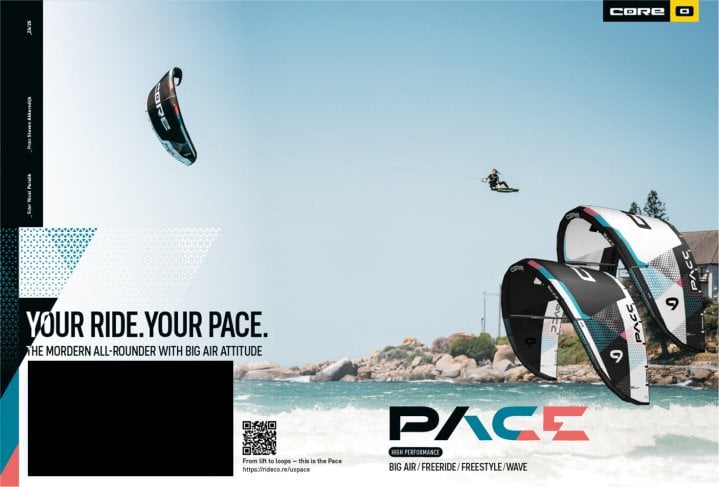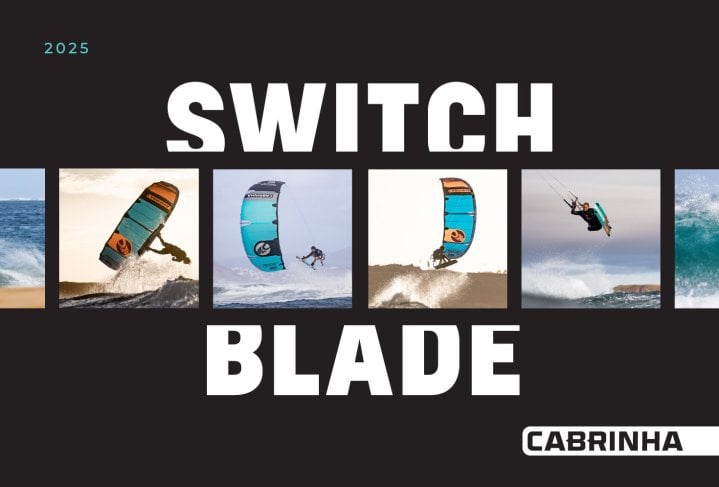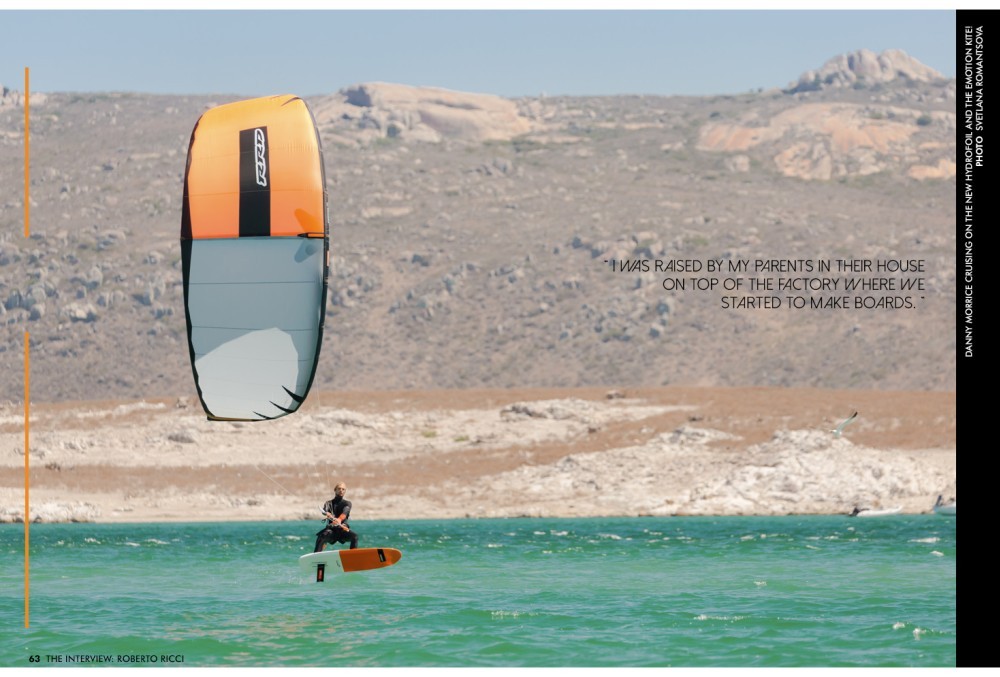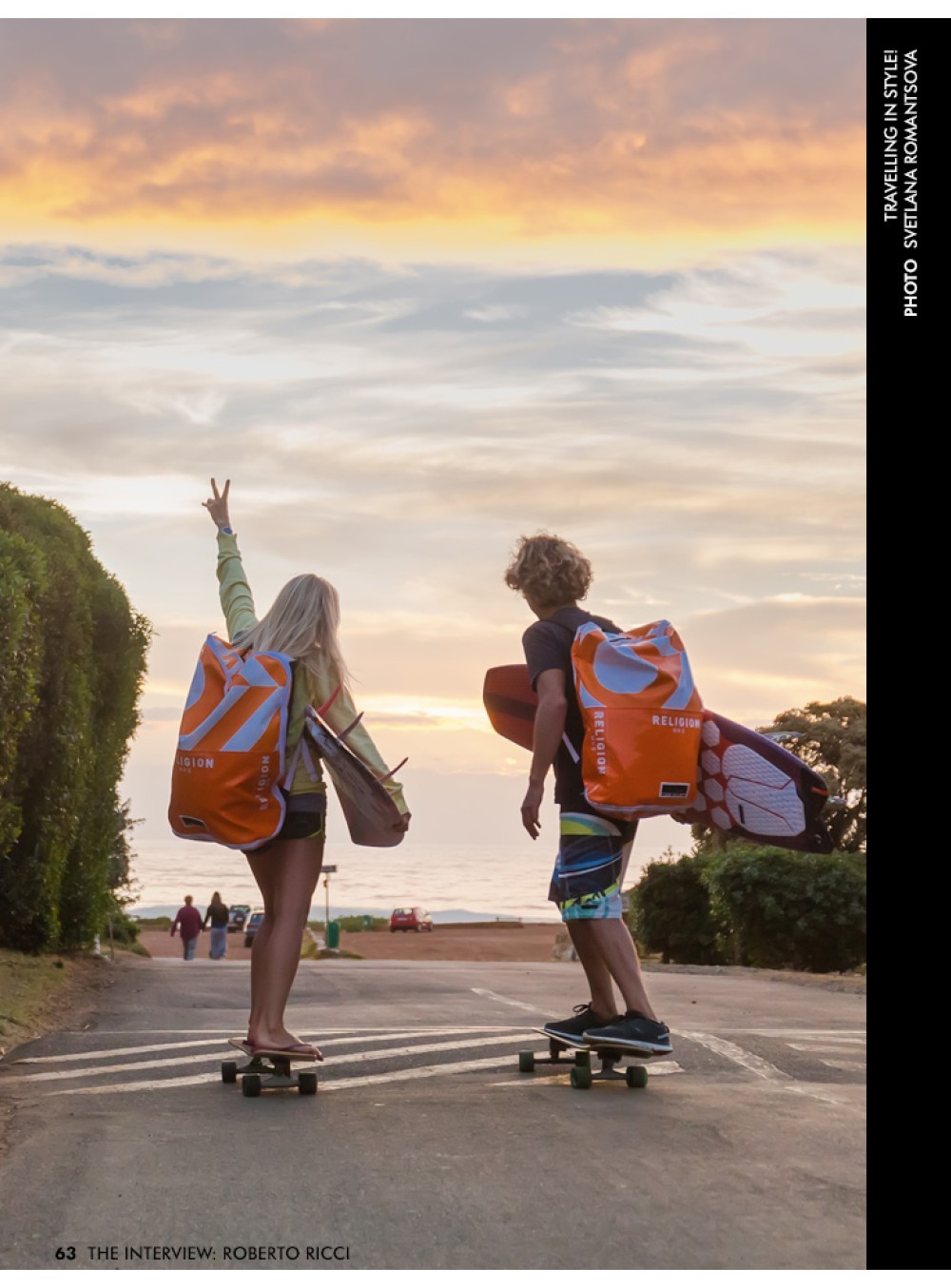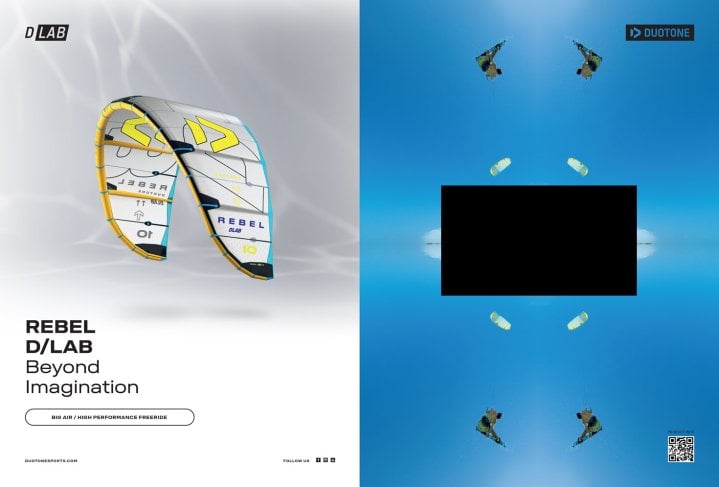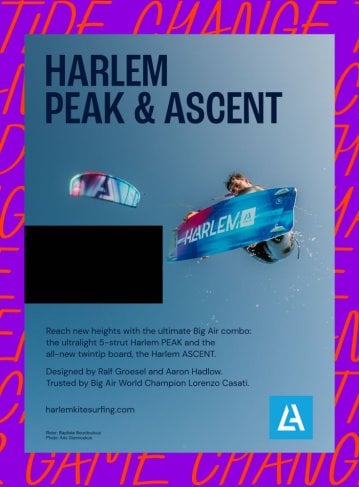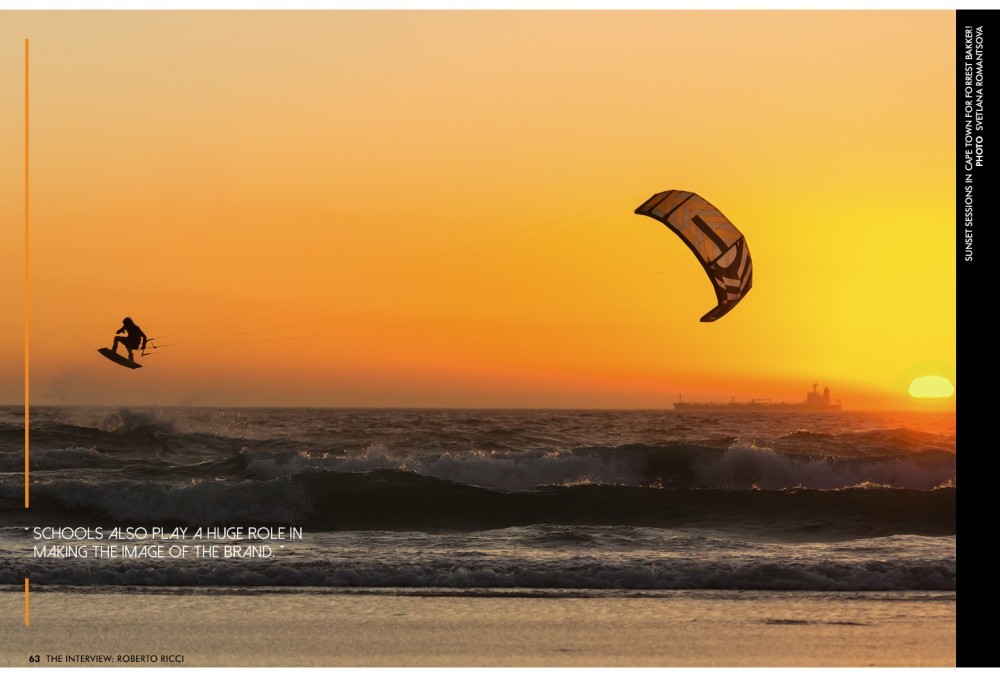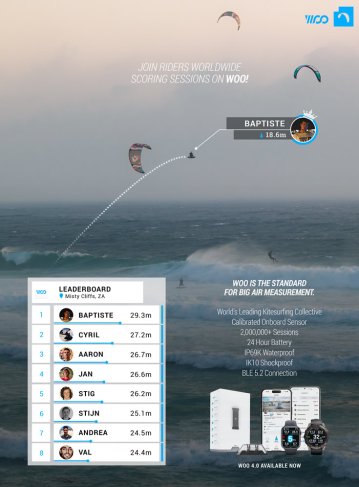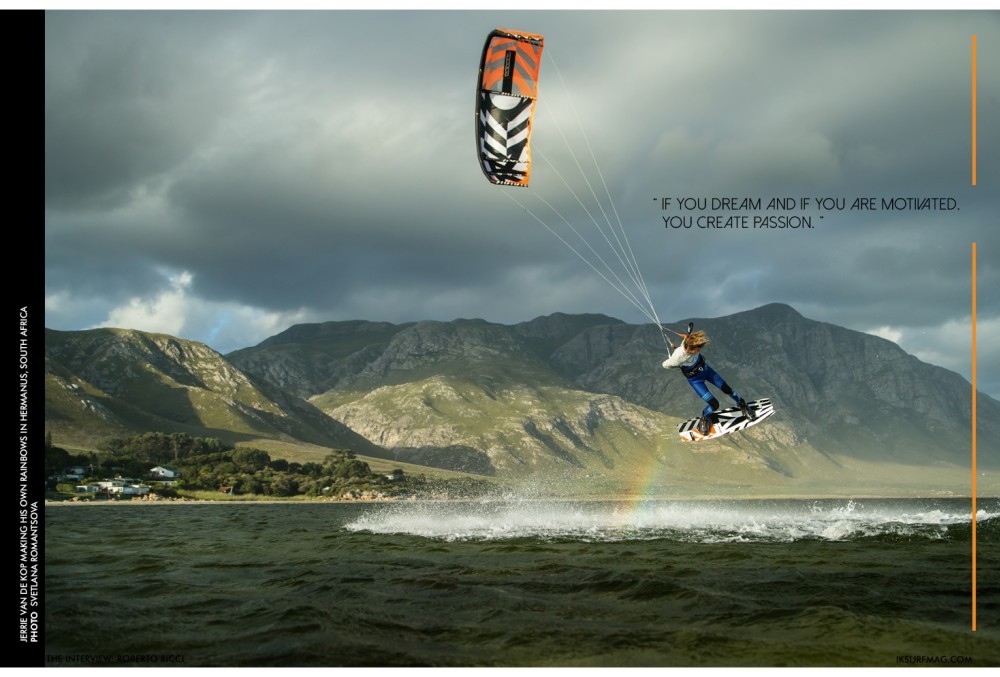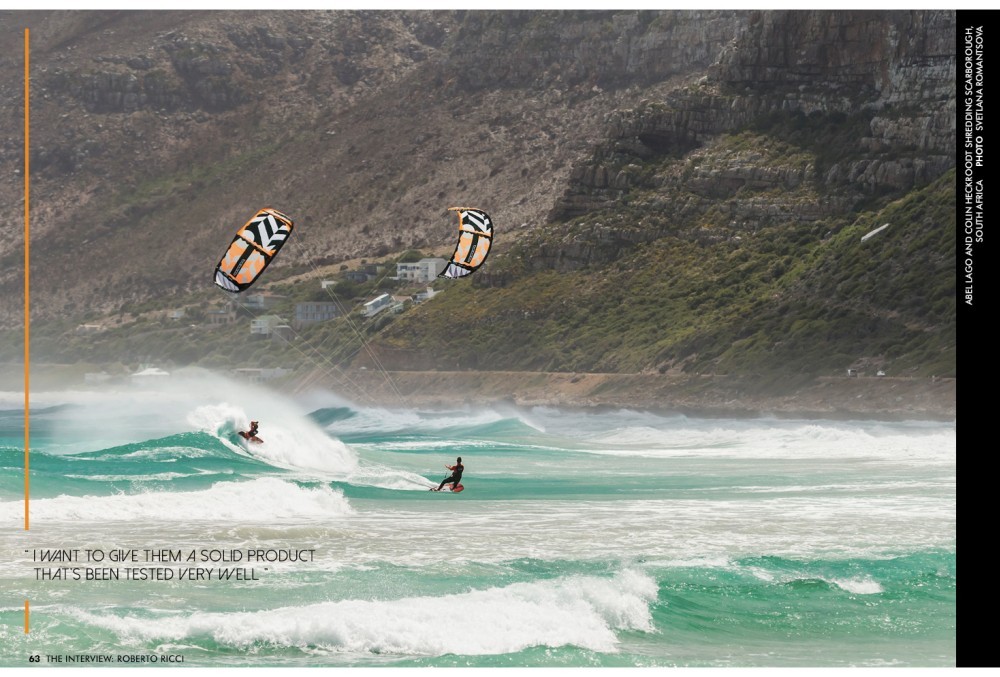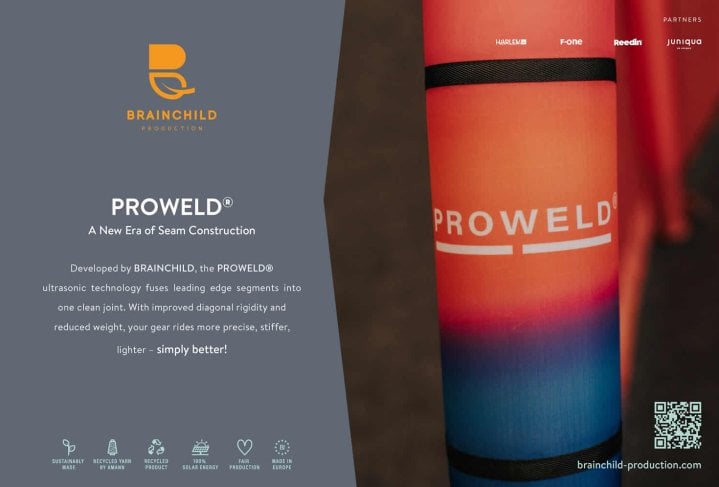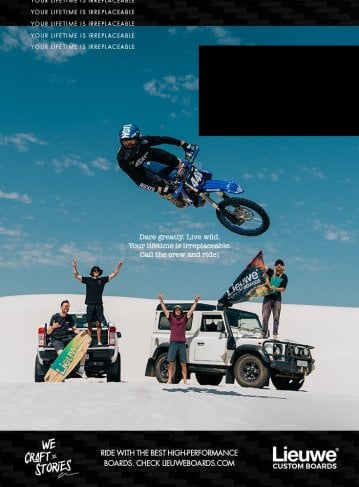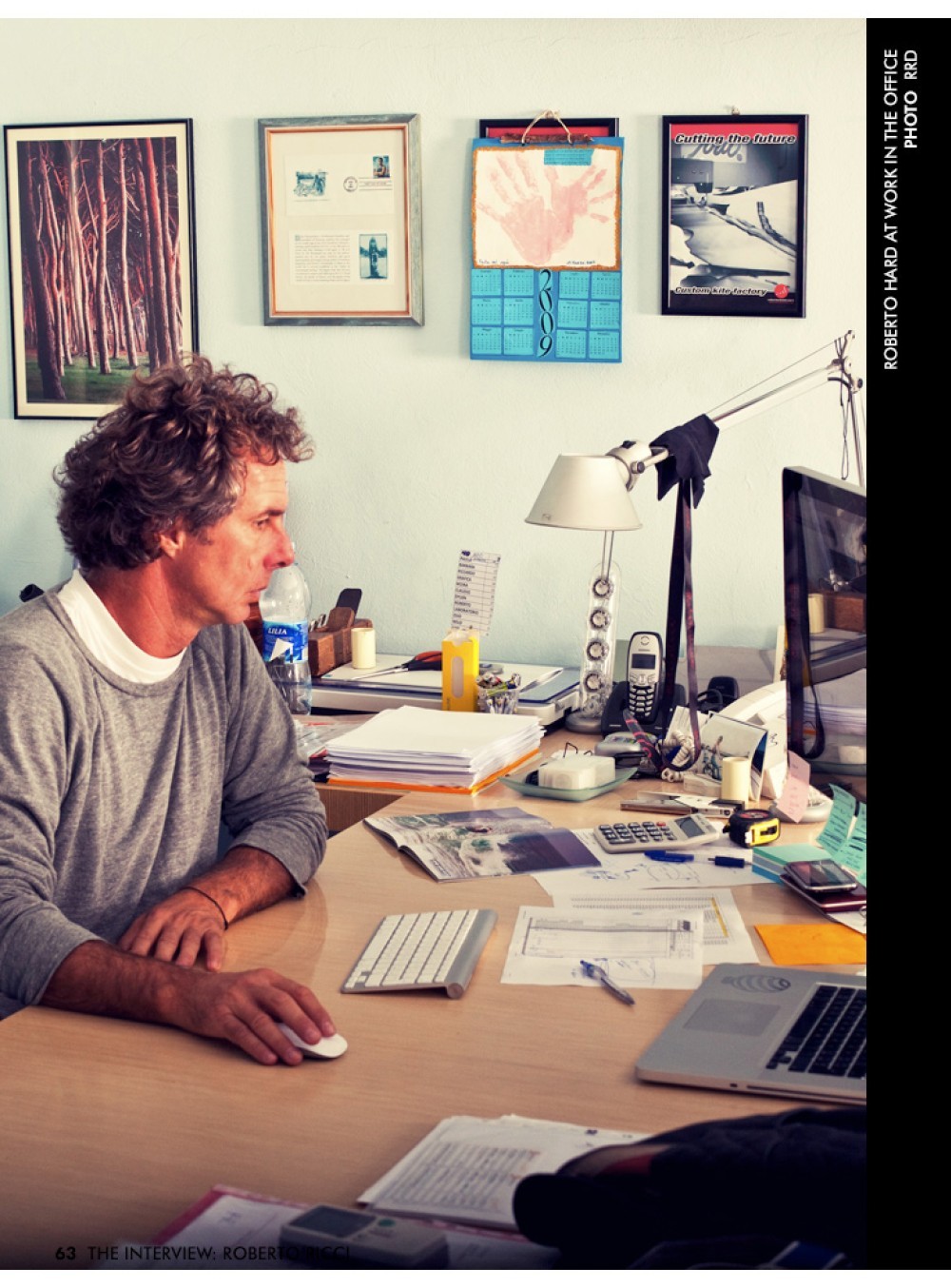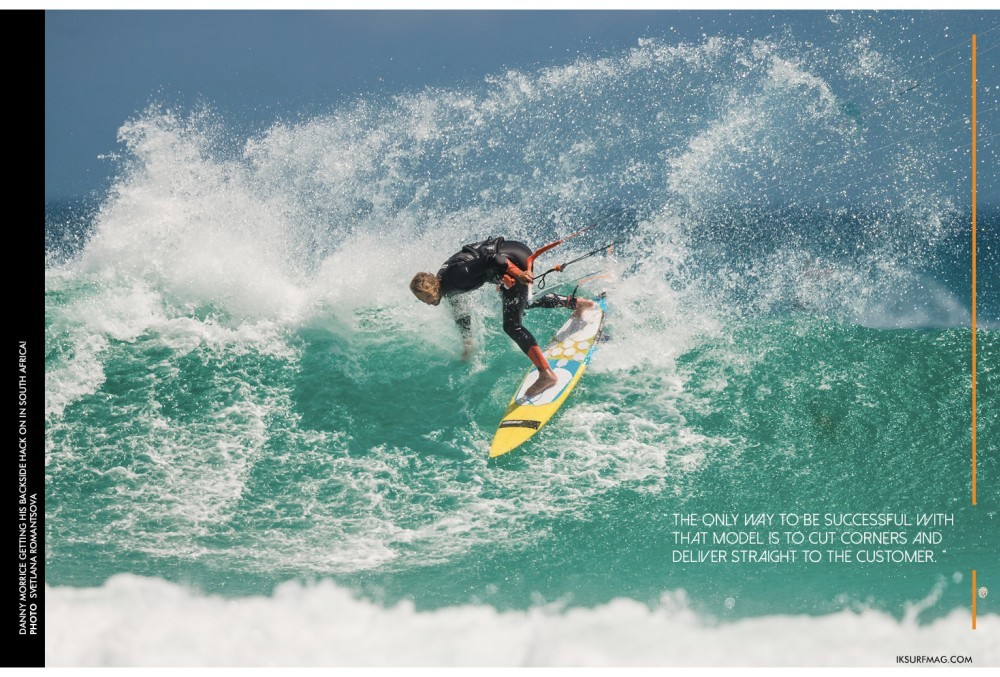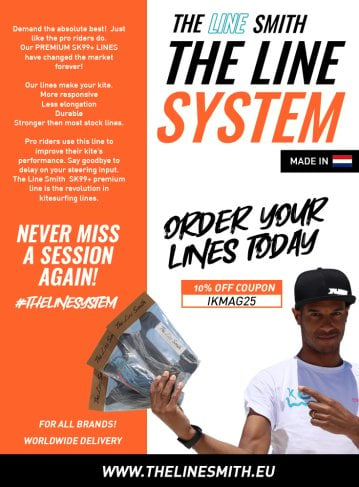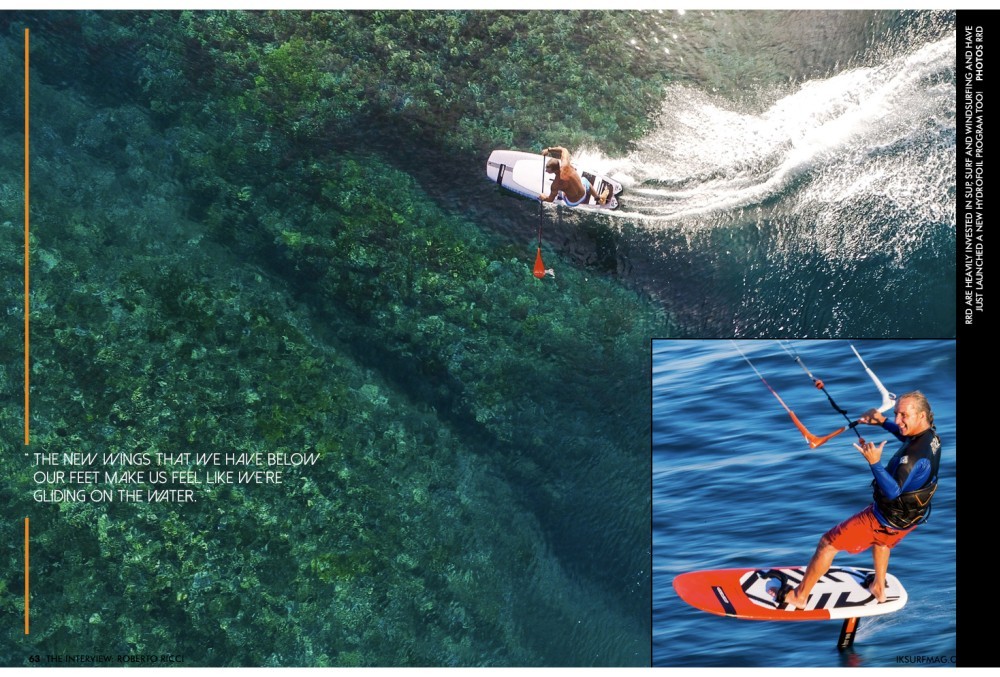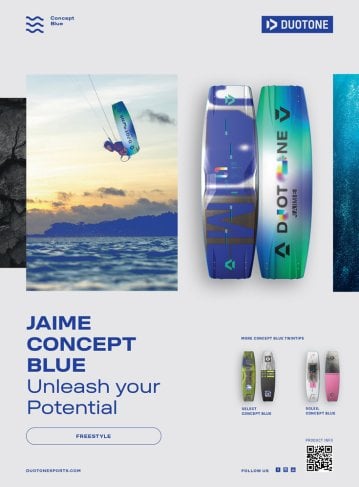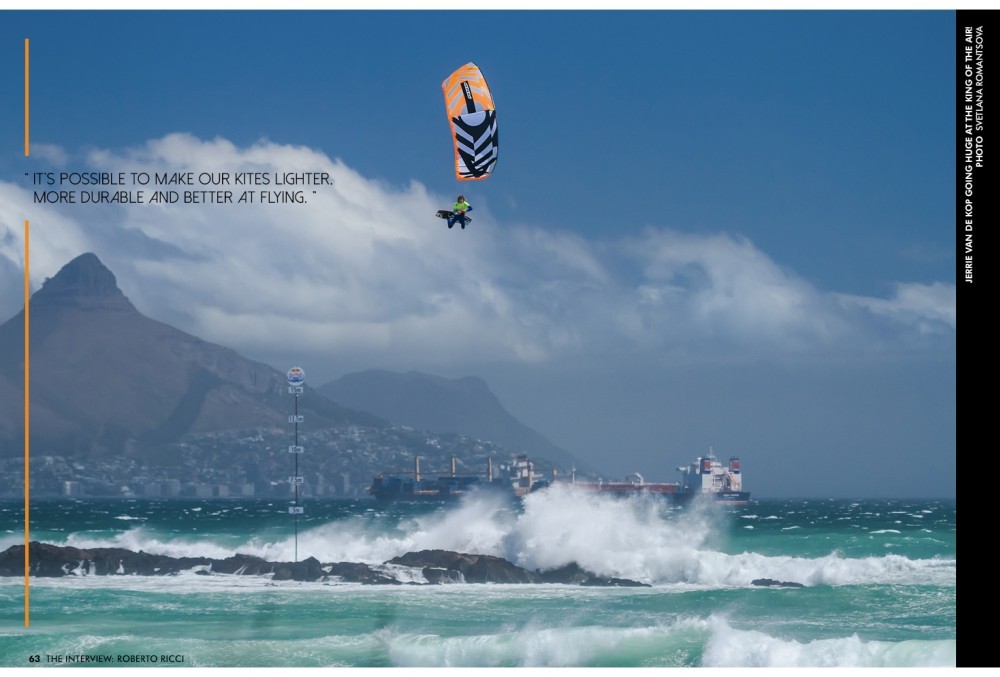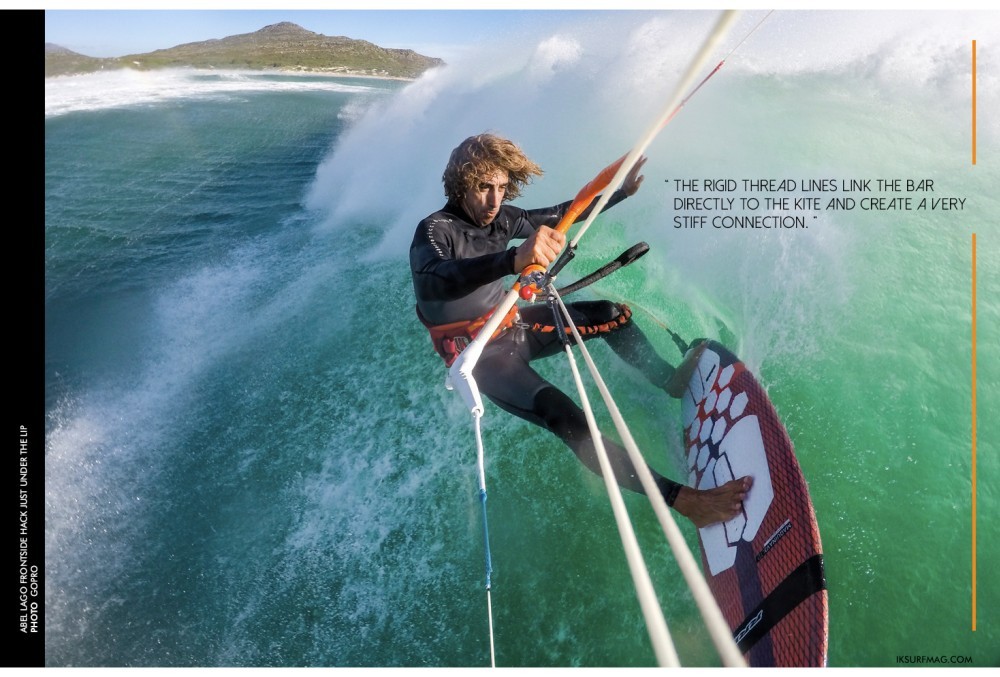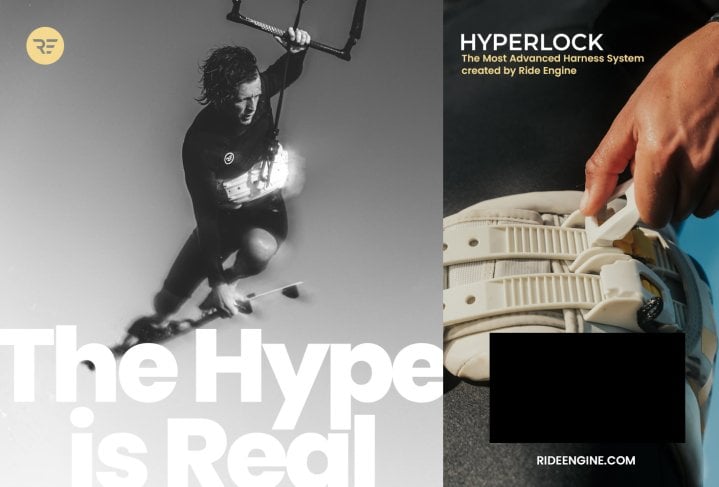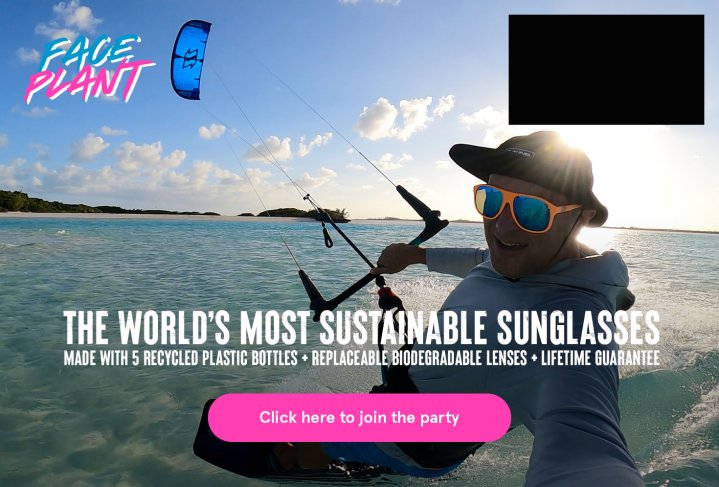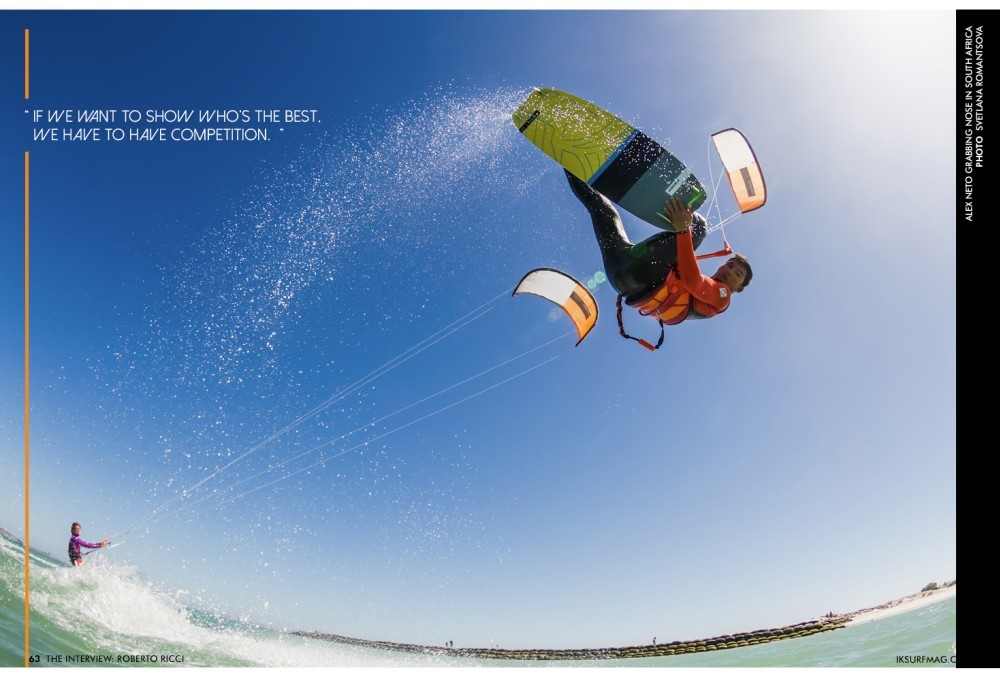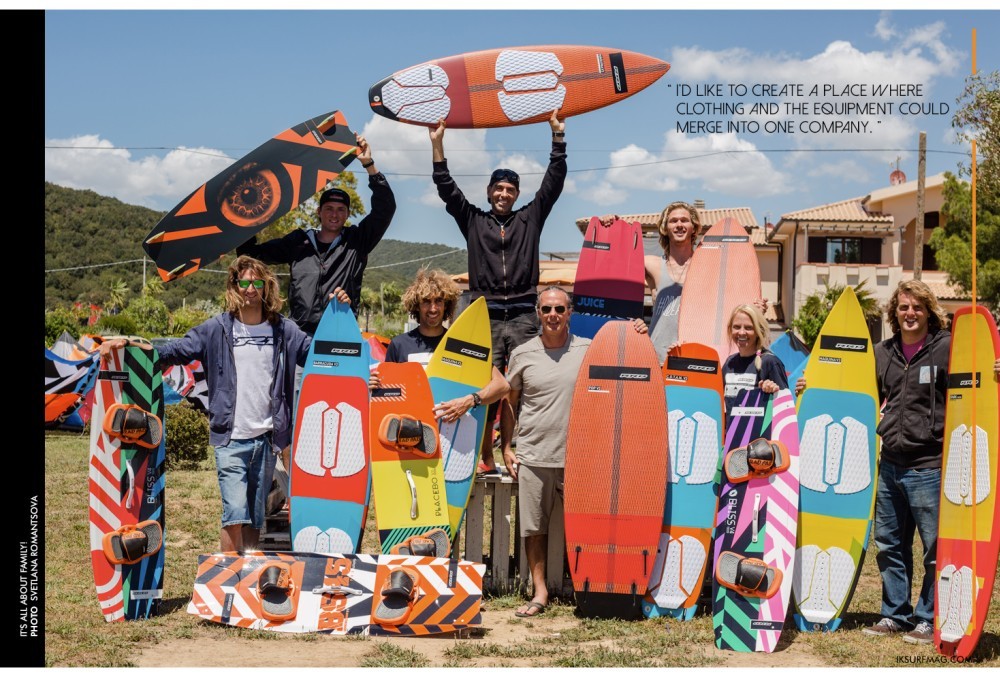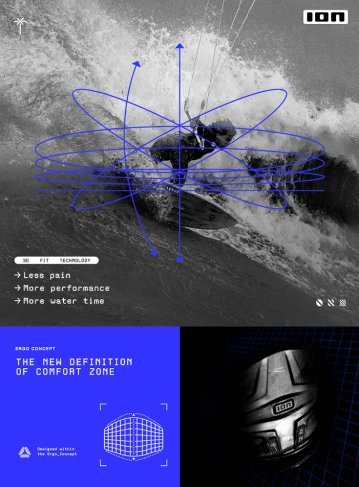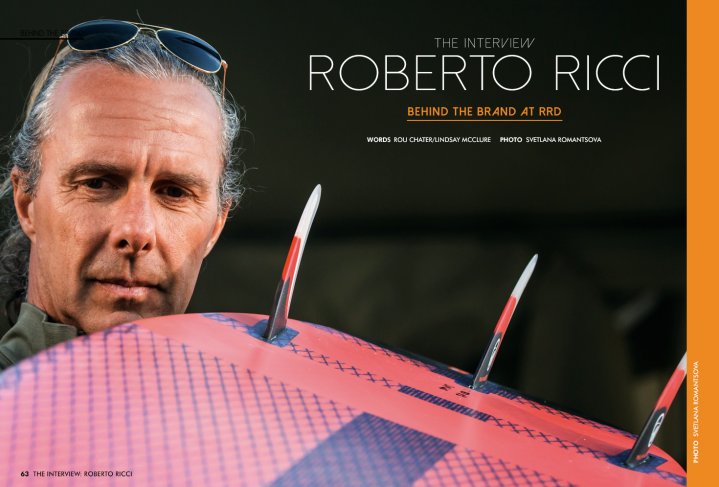
The Interview: Roberto Ricci
Issue 63 / Wed 7th Jun, 2017
Roberto Ricci is one of the original legends of kitesurfing; the accomplished waterman was shaping kiteboards before kiteboarding was even a thing, Rou Chater talks to him about his brand, RRD, his thoughts competitive kitesurfing, the future of the sport and the Olympics.
Roberto Ricci is one of the original legends of our sport; the creatively minded Italian was building kiteboards before kiteboarding was even a thing. Over the years the brand has developed into the finely tuned machine, it is today. With a growing following around the world, an expanding pro team and products covering a whole host of water sports we managed to grab a few minutes of Roberto’s time for a chat!
Roberto, you’ve been in the industry for longer than most people. What excites you about getting up and going to work each day?
The excitement about making a new product gets me into work each day. I’m always excited to see that there’s something new in the pipeline that hasn’t been finished yet, that needs to be touched up or tested. I’m excited about the whole testing, design and product making process. It’s what drives me forward every day.
Lots of people say that being part of RRD is like being part of a family, whether you are an employee, a sponsored rider or a customer. How do you create this atmosphere and how do you maintain it?
Being based in Italy and being brought up in the Italian culture, we try to make everyone — clients, suppliers, team riders and everyone who works with the company — feel welcome. We are taught by nature to invite them to lunch or dinner. We have this natural hospitality attitude. We don’t force it. I think it boils down to the fact that I was raised by my parents in their house on top of the factory where we started to make boards.
Every day at lunch my mum would be knocking with a broom on the floor calling, “Guys, lunch is ready! Come up!” We would all go up and have lunch, and when we would sit down at the table, there would be no barrier. It’s a very good way to brainstorm, share ideas and ask questions. I think this kind of Italian philosophy is very much felt within the company in general, it’s natural.
My family likes to be around people because we can always learn something from other people. Meeting people, sharing ideas and possibilities is always rewarding. It’s an important give and take, and it’s what life is all about in the end. Otherwise, we’re just lonely wolves on the planet.
The brand has always been big in Italy, but in the recent years, the global expansion has been very noticeable. How have you achieved that and is it hard to sustain in this modern climate?
We’ve been distributing our products, starting with windsurfing, since 1995, so we’ve had a few years to develop a strong distribution network. We launched kiteboarding in 1997 with boards and in 2000 with our first kite collection. We were one of the very first brands to launch kiteboarding products. Nowadays, with a very international team and more investment into marketing, it’s quite easy to see that RRD is out there with a great line of products.
This is also thanks to our team riders who are the spokespeople for the brand, both in freestyle and in wave riding. Schools also play a huge role in making the image of the brand. We have many schools worldwide who are loyal to us. They give excellent service to the customers, and they show a great example of how to teach and progress in the sport. Thanks to all of this, we have been able to build a really strong and robust global network.
Our home is in Italy, but we also have a base in Cape Town, and have been living there for some of the year. Also, we've been spending time on Maui and travelling to the World Cups too; this approach has also helped.
The connection is always very powerful between the Pacific area, the African area and the whole European area. Now, we also have a solid distributor in the US. The American market is the second biggest market in the world, so we have to be there. We’ve set up a new company, RRD USA, with a new agent, Adam Super, who is very motivated. Now we’re trying to feel out the other parts of the market.
The RRD product range is extensive. What is the reason behind having such a large range, and for a new customer looking in, where should they start?
It’s a story about proposing something specific for each individual need. We aren’t new to the market. The addition of many different models of kites, twin tips and surfboards all has a reason. For example, the philosophy with the names of the kites is a very important approach: Emotion, Vision, Passion, Obsession, Addiction, Religion.
For me, those are the steps in the mindset of the company. Looking at this it’s easy to understand, if communicated properly, how people enter into the sport. They look at it with different eyes. The newcomer is called to the market, and we need to offer them a dream. We need to offer them a path that doesn’t stop tomorrow. We start with the Emotion and Vision, with time in the schools, then move to the all-around kites, and then to freeride.
Then, eventually, we go to something more for freestyle, and then many people end up at wave riding and the Religion. I see a clear, logical path if you make people dream. I prefer to always talk about the real, philosophical approach to things. We give people the chance to enter into the sport and the brand, and they will always be dreaming about the next step. In the end, if you dream and if you are motivated, you create passion.
You keep products in the range for a lot longer than other brands. What’s the advantage of this method, for you and the customer?
This has been our philosophy for the last eight years. We started with windsurfing, and then we expanded into kitesurfing and the whole collection. The philosophy is very simple. We don’t go after the yearly catalogue, at least not for the technical products like boards and kites. We are looking to improve the products, not just to improve the appearance of a new collection.
Instead, we’re releasing versions of the same family. Each version, or MK, can last one or two years or more, depending on how testing and development goes. Consumers don’t necessarily need to have new, flashy graphics and the same technology. We only bring to the market what we know is physically and realistically better than the previous version. This year’s Vision MK 5 is a two-year-old kite. We didn’t change it because we felt that the Vision, an all-terrain kite, couldn’t be improved any more.
So, we focused on changing the other kites. It’s the same with our surfboard collection, much of which is the same as the last year, but we introduced a new board, the Salerosa. We’ve had the same board, the Barracuda, that wasn’t updated for four years. The shape is great. We’ve been trying to update it, but we feel that it’s phenomenal.
We’re replacing and innovating new versions whenever we have something that can be appreciated by the consumer. We’re not releasing products simply because they’re new and have different graphics and marketing gimmicks. I don’t want to be the purest about this, but I also don’t want to lie to my customers. I want to give them a solid product that’s been tested very well and is proven. In the middle are the distributors and the shops. We offer them a lot more value in the stock they carry compared with other brands because they know that the lifetime of the product is going to last longer.
The quality of the products is very high, and Italy is known for producing a plethora of world-class products, from the automotive to the fashion industries. How many of the RRD products are made in Italy, and would you like to produce more equipment there in the future?
On the technical side, we have very few products being manufactured in Italy. We have the Ten Knots LTD twin tip that was produced in Italy. We have a new foil that’s built in Slovenia on the border of Italy. However, we don’t produce any technical products at home except our custom designs. Everything else is manufactured elsewhere. We produce a lot of clothing in Italy, which is a different business. We are happy because Italy retains some of the highest expertise in fine, luxury clothing, which is a different branch of the brand.
As far as the technology is concerned, we have been looking to produce a bit in Italy and I think in the future it will become even more possible. But, we’re a worldwide company that is looking for the best manufacturing plant.
We are one of the very few companies in the world with an in-house, custom factory. We are very attached to this approach. I like to see what’s going on in the custom factory. I like to see the product coming along, to shape it, touch it and test it out. One of the advantages of our custom factory is the excitement and the stoke that comes from being able to dream about a board, shape it, go in the water, test it, come back and modify it and then plan our graphics.
With the custom factory where we produce our designs, we often want to change the raw materials. By changing raw materials, we modify the supply chain. If we just produce something outside and don’t own the production factory, we're never going to get the same feeling and the same value.
With all the fashion houses in Italy, there must be some great factories for stitching. Is there a possibility of an Italian kite factory?
Maybe in the future. We found a factory that was making parachutes and stitching special sleds for the military. We visited them to analyse the possibility of making some kites there, but realistically, there’s no value there for the time being. Chinese and Sri Lankan production is pretty much flawless. Until the price of the manufacturing plants levels out, the only way to be successful with that model is to cut corners and deliver straight to the customer.
These days, there’s a big push toward sustainability. How are you embracing this as a brand?
Sustainability is a big part of our lifestyle. It’s time to see what kind of innovations there can be in this segment of the market, especially with the least recyclable part of our products, the foam for the boards. I’m not as worried about kites because fabrics can be recycled, but I’m really worried about the EPS core that will last over 100,000 years. I don’t like that.
We will keep our eyes open for alternatives. Green foams are a reality in the surfboard industry, and I think it’s time to step forward with that. I’m a pragmatic person, in a sense. When it boils down to safety, security or environmental issues, I don’t want to use them as marketing. I see them as real concerns, and I want to address them with a proper approach. For our inflatable boards, we’ve been testing some TPU instead of PVC. The TPU is a less-polluting material. There are real possibilities, and there’s potential.
RRD has an extensive equipment arm of the business supplying windsurf, SUP, kitesurf and surf, not to mention accessories and wetsuits for all of those sports. How are those businesses split in terms of their current size and where do you see the most growth in the future?
Because we’re a worldwide market, we are pretty balanced. We’re 40% windsurfing, 35% kiteboarding, and 20-25% SUP and surfing. Ultimately, I always like to see the company being very balanced, 33-33-33, which is possible because we have a motivated team in each sector.
In terms of kitesurfing, the rise of kite foiling has been a big resurgence for the sport. How do you view foiling within the sport? Is it something that every rider should be paying attention to, or is it just for the racers?
Foiling is the new branch of the sport. It’s not just for racing. Racing is just the most extreme part of foiling. Foiling is for windsurfing, SUPing, surfing and kiting. In the end, everyone is going to have his or her own foil for the type of sport they’re doing. The feeling is the same. The new wings that we have below our feet make us feel like we’re gliding on the water.
Foiling is going to feed in a lot of newcomers and keep the older customers interested because they’re attracted to a new sensation. We’re opening up a new R&D department specifically for hydrofoiling in Castiglione where I live. Foiling is an excellent approach to riding water and a great approach to brainstorming about new, endless possibilities.
Where do you see the next big developments coming from within the sport? Have we reached the pinnacle of kite design and board technology, or is there still progress to be made?
There’s still progress to be made, both in technology and in design. It's possible to make our kites lighter, more durable and better at flying. We have a lot of ideas in the box. Part of our business is to understand when it’s the right time to launch a new idea. We were the first to have real wave kites, nine or ten years ago. Our first wave kites were super fast, and everyone thought those kites were scary.
Nowadays, that’s exactly what people look for in a wave kite. Sometimes we risk wasting our imagination and effort in product development if we launch a product that’s too far forward. Each product has to be appreciated by the end consumer. Understanding who is the end consumer is the most challenging part of the business by far.
A few brands have put a lot of R&D into their kite bars lately. The RRD Global Bar V8 is coming out soon. It’s a vision in simplicity. What do you think about the rear line trim bars that we’re seeing on the market? Are you keen to keep the RRD bar simple, or is there still scope for development in the future?
We don’t want to stop development. I think the push by North, Ocean Rodeo and other brands is quite interesting. I like the desire to simplify things by making new innovations that riders can actually use, like simplifying the bar, which is the most important tool in your hands when you’re flying a kite.
The bar is an extension of your arms. It’s too early to judge if the Click Bar is appreciated by the market or if it’s just a new marketing gimmick. I’ve tested some of those bars, and I think they work great, but I don’t know if they’re needed. As the end consumer, I like to have something that’s simple, well refined and reliable.
Can you tell us about the rigid thread lines that are exclusively used by RRD and how they are different from other brands on the market?
This has been one of our biggest innovations in the last eight years. The lines are the most important part of the kite when it’s flying. The rigid thread lines link the bar directly to the kite and create a very stiff connection. They are a lot more durable, and they don’t loose or gain any length. Your kite stays trimmed. It’s a very important feature. We’re working on a special video about the bar to explain the lines because it will be essential for people to understand that these lines are unique. We have our own, exclusive supplier who makes them only for us.
You’ve been investing a lot in the RRD pro team, in young riders like Adeuri Corniel, Alex Neto and Chis Bobryk who are joining a large roster of pros. How important is a good team and what do you look to get out of them when they join the family?
It’s a very basic philosophy. Riders need to be willing to push their limits and push us to make new products. Competition is the essence of our brand. Our drive and philosophy is to always be the best. Team riders have value in not only selling their results to us. They are an important part of our image. We try to portray them as lifestyle promoters.
Our sport, in the last ten years, has changed from a pure, performance driven approach to being about lifestyle. We can see it in surfing. There are surfers out there who are very famous, and they have never won a competition. We’re not just the champions. The champion has a great value, but I also like to talk to people who are out there because they just love to jump or ride waves.
To me, good team riders are those who have kick ass results in the world cup and, at the same time, are great ambassadors for the lifestyle. It’s important that we try to invite newcomers in. We need to break this idea that you have to be cool at all costs. Be yourself, portray your heart and you can’t go wrong.
What’s your take on the current competition scene within the kiteboarding industry? It has been going through a lot of changes lately.
I have really high hopes that the GKA will take on managing more events, mainly wave events. It’s a big transition between the PKRA, which was driven down the hill by people who didn’t have a real plan or attachment to the sport. It looks like there’s a new movement coming.
We as brands decided two years ago that, until we found a separate association that could run events properly, we were going to redraw the events by ourselves. I don't think the GKA’s intention is to run events forever, but there’s no real association to drive the sport forward. Of course, competitions are super important for our sport. If we want to show who’s the best, we have to have competition.
You were a part of the windsurfing scene when the Olympics got involved. Having lived through that, how do you feel about kiteboarding in the Olympics?
I never had a good feeling about the Olympics and our water sports. I was a big dreamer when I saw windsurfing in the Olympics. Stephan van den Berg and Klaus Maran were my idols way back in the 1980’s. However, I don’t think the Olympic philosophy matches with our outdoor sports philosophy.
I think that we sell more of our lifestyle, and it doesn't belong in the stadiums. We are free spirits who live outdoors. We enter into a sport that gives us the freedom to choose. I don’t think that we’re going to be helped by the Olympic Games if they carry windsurfing, kiteboarding or surfing. It’s not going to change anything for the end consumer.
Where do you see the future of competitive kitesurfing going?
Competitive kitesurfing is going to be run by professionals. I believe in being brought up to the professional level through circuits. We don’t need to have the Olympic committee come in and tell us what to do. It could be good, but only for people who are competition-driven.
A lot of people who enter our sport don’t care about winning; they just want to have a good time. I think the future will have more professional tours that are organised in a way that you don't only sell the results, but you sell the lifestyle.
What does the future hold for RRD? Are there any big plans you want to tell us about?
There’s always a good plan. My priority right now is to find a new place for the company to work. I’d like to create a place where clothing and the equipment could merge into one company. I’d like it if the clothing design touches with the equipment design a little more. We have a unique approach and style with our products, and I think it would be profitable for the company if we go this way. I’d also like to increase the amount of R&D centres around the world. I’d like to establish an R&D network with centres where people can go, test gear and share ideas.
Thanks so much Roberto for taking the time to talk to us!
Videos
By Rou Chater, Lindsay McClure


